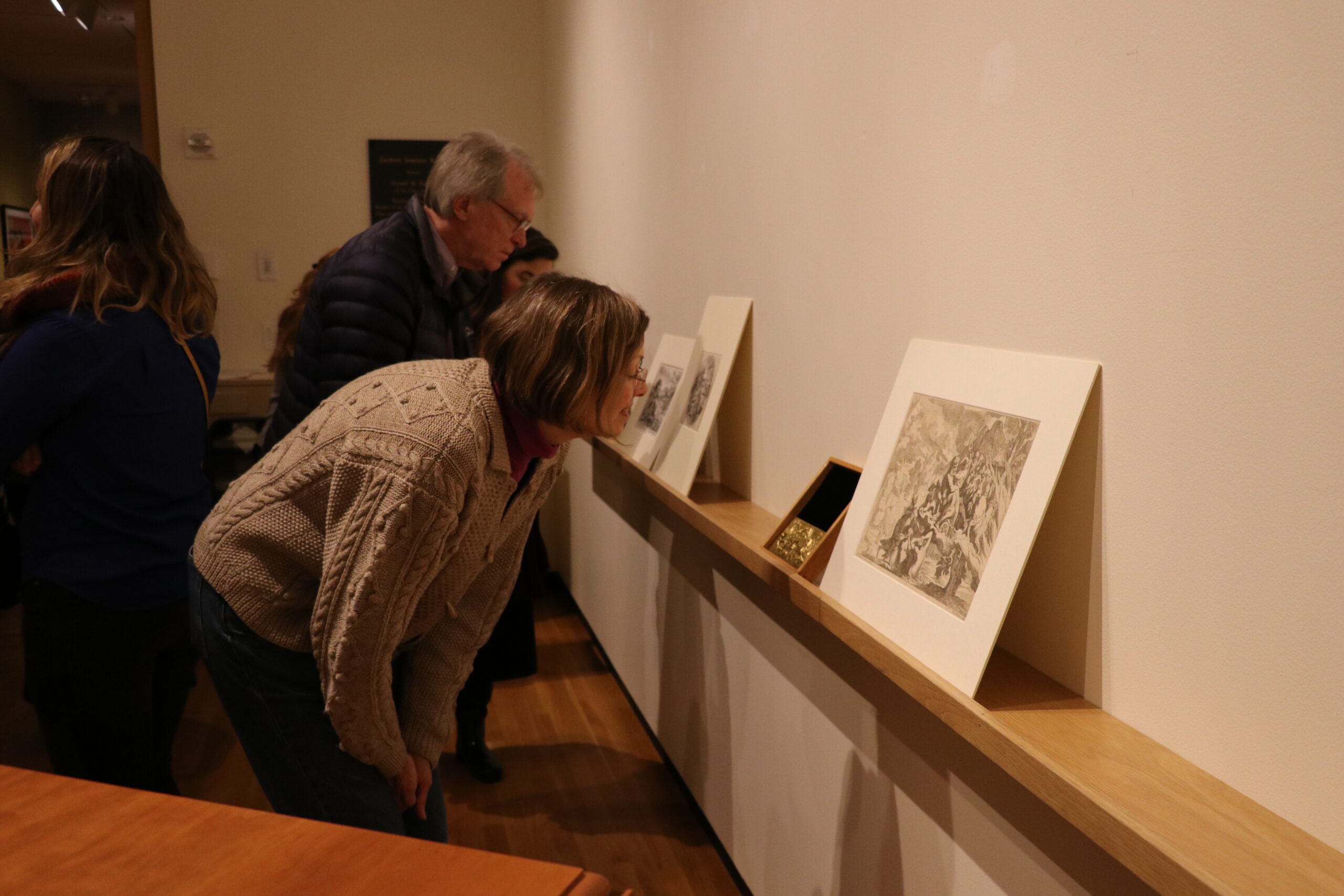Lecture explores sexual violence and visual art
February 2, 2018
 Ezra Sunshine
Ezra SunshineAs many Americans reassess the cultural codes surrounding sexual assault, students and faculty turned back in time yesterday evening to reflect on the glamorization of sexual violence in foundational European art within its historical context.
Organized by Andrew W. Mellon Postdoctoral Curatorial Fellow Ellen Tani and Associate Director of Gender Violence Prevention and Education Lisa Peterson, “Bearing Witness: Gender Violence and Visual Art” challenged attendees to think beyond the contemporary moment.
“We often think about how sexual violence is depicted in the media, in films, in magazines or even in music, but [it] all come[s] from somewhere,” Tani said. “One of the central questions of our event is why rape is such a foundational element of visual culture.”
The art that was viewed and discussed was from a wide range of time periods, from the 16th century to the 1990s. Much of the early 16th and 17th century art depicts mythological tropes and origin stories that are rooted in misogyny and sexual violence, such as the “Rape of Persephone.”
“Rarely in art history classes do we talk about subject matter,” said Tani at the event. “We talk about how the subject matter is a vehicle for achieving artistic accomplishments and mastery, and new technical experiments that move art-making forward, but we sort of take for granted that some of the platforms that are used for this naturalize and in fact aestheticize, and perhaps glorify, these narratives of sexual violence.”
Peterson and Tani led attendees in contrasting male and female artists’ renditions of a scene from the apocryphal tale “Susanna and the Elders,” in which two respected judges try to coerce a bathing woman into having sex with them. Artemisia Gentileschi’s piece portrays Susanna in the forefront, resisting the elders, who appear to be conspiring. Christoffel Jegher’s woodcut depicts Susanna as a less prominent, more resigned figure.
Attendees also discussed a series of photographs by Donna Ferrato, who was the first photographer to capture domestic violence as it happened. Her photos, which were controversial at the time of their publication, contributed to a developing national conversation on the topic of domestic violence. Her photography was later featured on the cover of TIME Magazine.
“[We hope to] start dialogue about and with students, thinking really critically about what are the roots of violence. How have ideas in the distant past informed how we value people, how we think about and glamorize violence, and how we can think about our own roles in perpetuating that or not,” said Peterson.
Peterson and Tani hope that framing the conversation with imagery will be more productive and engaging. Peterson believes that art is just one of the many entry points into the conversation around gender and sexual violence prevention.
“I feel like, especially with domestic violence, that particular [Ferrato] piece, I’m going to be thinking about that for the next couple weeks at least,” said Jacob Dexter-Meldrum ’20, one of the attendees. “I think that this is a really interesting way to look at the topic of gender violence and how that’s played a role in our history as human beings.”
“What’s interesting about the role of the work of art is that it gives you a third party in the conversation,” said Tani. “Being able to have artwork as a mediating force between individuals helps create a non-confrontational conversation.”
For Tani and Peterson, art is crucial to opening up this conversation. Recognizing the historic pervasiveness of misogyny in Western art for hundreds of years allows viewers to reflect on how their perceptions and behavior have been affected by it.
“I think part of it is thinking about the impact our environment has on our attitudes and behaviors,” said Peterson. “I think on the one hand it can feel a little overwhelming, that it’s all these centuries upon centuries of modes of thought that are, you know, impacting [our] current way of thinking. But there is a lot of power in us as individuals to help shape other people’s perspectives and to change our own behaviors and how we’re relating with others.”
Isabelle Hallé contributed to this report.

Comments
Before submitting a comment, please review our comment policy. Some key points from the policy: